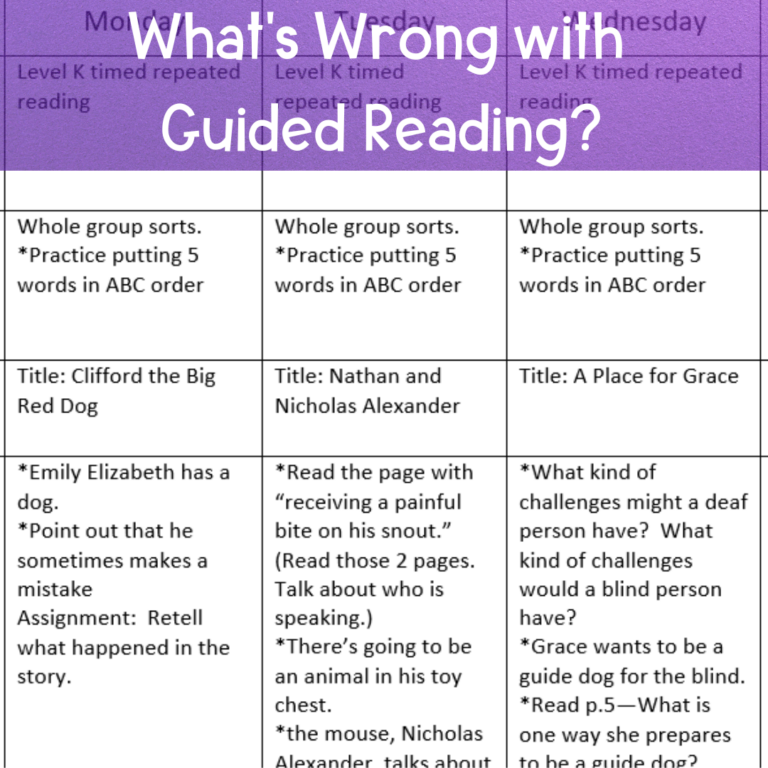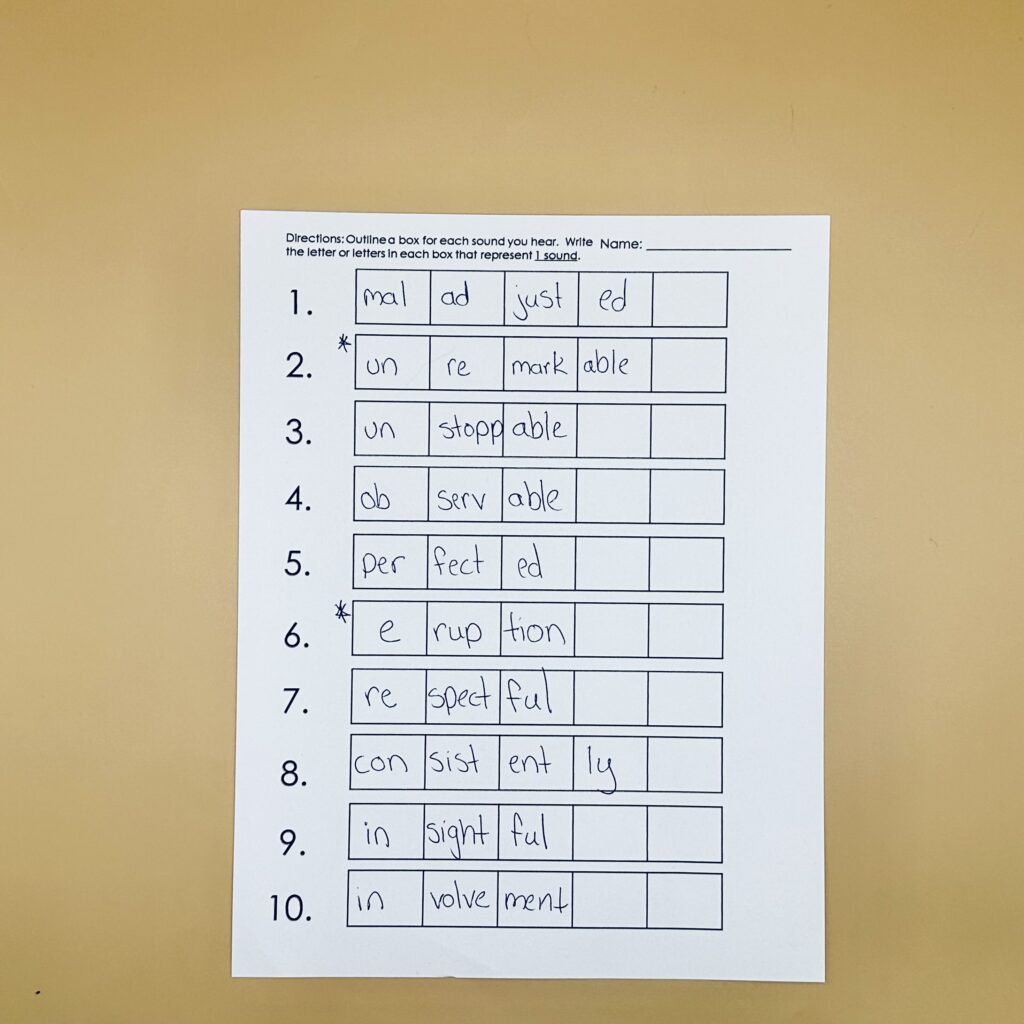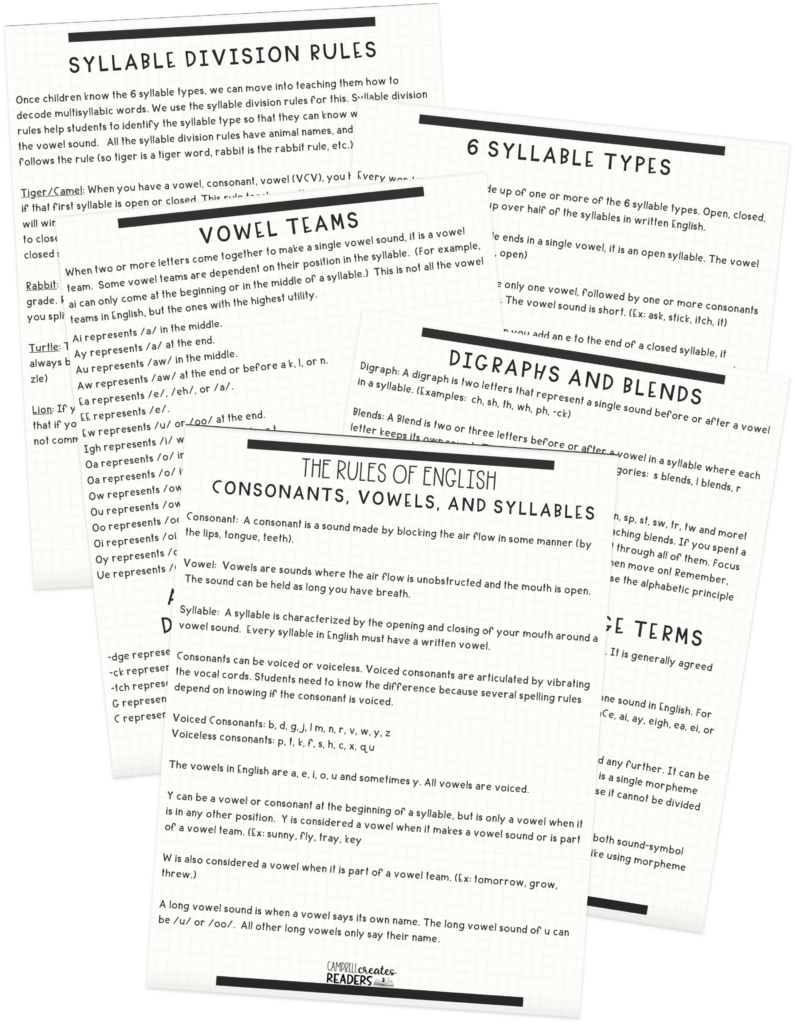
Share This:
Ask a room full of teachers how to split the word antibiotic and you’ll get five different answers, and most likely a heated debate or two. I will often have teachers reach out to me and ask how I would split certain words like beautiful, completed, or another. Do we split it by syllable? By meaning part? I’ve even seen grown adults fighting on Facebook about whether we split a word at the morpheme level or the syllable level.
But the truth is, how we split a word apart depends on our purpose. Are we splitting it to read the word correctly or to spell the word? If the activity isn’t intended to grow a student as a reader or a speller is there a need to even split it?
So, let’s dig a little bit deeper about how to split up words.
Asking students to split words apart should not be an all day, every single day occurrence. We need to remember, it’s not about arguing over whether we should split by syllables or split by morphemes. Both serve an important purpose. What matters most is whether students can read and spell the words in front of them. If the answer is no, then syllabication or morphological analysis simply become strategies to help them get there.
Syllabication, for example, is not an end goal. We don’t expect students to mark every vowel or draw every syllable division forever. Instead, we teach these strategies as temporary scaffolds to support access to the word. The goal isn’t for them to endlessly mark up syllables; the goal is for them to use those skills automatically and independently when they need them.
The same is true for morphology. We don’t ask students to stop and define every single word that contains the prefix non- or the suffix -able. Instead, we want them to notice meaningful parts of words and use that knowledge flexibly as they read and write. Morphology gives students access to meaning, while splitting by syllables gives them access to accurate pronunciation (most of the time) and spelling.
In the end, both tools serve the same purpose: helping students become competent, confident readers and writers who can decode, spell, and understand the words they encounter. Our job is to teach students how and when to use each strategy so that they can move beyond the markings on the page to fluent, meaningful reading.
When my students are spelling a word, I expect them to split it by syllables. Syllabication helps students take a longer, complex word and break it into smaller, more manageable chunks so they can spell it accurately.
I teach my students to tap out the number of syllables in a word because it gives them a reliable strategy to apply when spelling. One of the guiding principles I use is that every syllable must have a written vowel. When students are spelling, I ask them to:

This step-by-step process gives students a concrete framework for spelling unfamiliar words. As they write, they may notice meaningful parts (prefixes, suffixes, or roots) within those syllables. But when the goal is accurate spelling, I have them start with syllables. It’s a dependable strategy that builds both structure and confidence in their writing.
When my students are decoding a multisyllabic word, I ask them to split it by morphemes, (the smallest unit in a word that holds meaning). Instead of focusing on how many syllables a word has, our goal shifts to identifying smaller chunks that carry meaning. After all, if a student doesn’t know how to read the word, its very unlikely that they will be able to identify the number of syllables immediately.
When we come across an unfamiliar word, the very first thing I teach students to do is to look for prefixes and suffixes they recognize. Those affixes are often easy to spot and give immediate clues about the word’s meaning. Once we’ve identified those familiar parts, we turn our attention to what remains and work together to figure out how to read the entire word. You can find more information about decoding multisyllabic words here.

Morphology plays a critical role here because it allows students to instantly recognize meaningful parts of words. This not only supports their ability to accurately read the word, but it also deepens their understanding of what the word means. By attending to morphemes, students develop a habit of analyzing words for both structure and meaning: an essential skill for advanced decoding and vocabulary growth.
At the end of the day, it’s not about choosing sides-syllables or morphemes. It’s about choosing the right tool for the right purpose. Both are essential, and both deserve a place in our instruction. When students are spelling, syllables provide structure and ensure every vowel sound is represented. When students are decoding, morphemes provide meaning and help them connect words to what they already know.
Our goal isn’t to turn students into word dissectors who mark every syllable or label every morpheme. Our goal is to help them become independent readers and writers who can flexibly use the strategies that make sense for the task at hand.
If a child can read and spell the words they need, that’s what matters most. But if they can’t, that’s when strategies like syllabication and morphology come in as scaffolds, not as steps to memorize. These tools give students insight into how our language works and, more importantly, the confidence to tackle new and challenging words.
Share This:

Savannah Campbell is a K-5 reading specialist. She has taught her entire 12-year teaching career at the school she went to as a child. She holds two master’s degrees in education from the College of William and Mary. Savannah is both Orton-Gillingham and LETRS trained. Her greatest hope in life is to allow all children to live the life they want by helping them to become literate individuals.

Savannah Campbell is a K-5 reading specialist. She has taught her entire 12-year teaching career at the school she went to as a child. She holds two master’s degrees in education from the College of William and Mary. Savannah is both Orton-Gillingham and LETRS trained. Her greatest hope in life is to allow all children to live the life they want by helping them to become literate individuals.
Feeling overwhelmed with all the terminology out there? Want to know the key terms all teachers need to teach phonics? In this FREE Rules of English cheat sheet, you get a 5 page pdf that takes you through the most important terms for understanding English—you’ll learn about digraphs, blends, syllable types, syllable divisions, and move. Grab today and take the stress out of your phonics prep!
